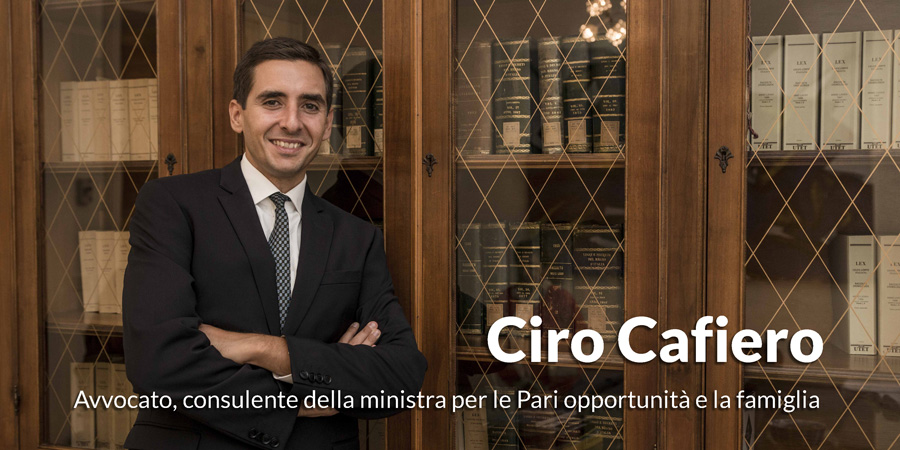In order to compete with the machine, man risks becoming one in turn. The wedging of artificial electronic and computer components transforms the organism into an integrated system, to the point of overcoming the classic distinction between human and mechanical, between natural and artificial. We are in front of the cyborg man. It is urgent to create bodies and institutions that guarantee the governance of technological innovation, limiting the dehumanizing forms of posthumanism. The debate on the work of the future has accelerated since January 28 last, when the Council of Ministers fired a bill on agile work which makes it possible to use modern technologies to work even in a place other than the workplace. . Here we will just answer three questions. The first concerns the changes that technological innovation will bring to work; the second concerns the conditions that this innovation exerts on the possibility of conceiving man as a modifiable being, where technique weighs more than nature; the third concerns the way in which to manage technological innovation to reap the benefits and avoid the risk that it takes over mankind. Work is changing because of ten technologies summarized in the report of the British government, The future of work: jobs and skill in 2030 and in that of the McKinsey global institute. Mobile Internet, job automation, Internet of things, cloud technology, advanced robotics, new generation genomics, means of transport, technologies for energy storage, 3D printing, nanomaterials. This change must be analyzed according to three distinct aspects. The first is that of smart working, which can be translated into a slogan: “Work where you want, when you want and how you want”. In fact, thanks to the possibility of being always connected to work through mobile devices, the workplace will be emptied of meaning because it will be replaced by virtual spaces; as well as working hours – because each worker will manage their time – or the managerial power of the employer, because each worker will manage himself in a logic aimed at the result. Richard Branson, patron of Virgin, brought smart working into the company. Companies such as Barilla, Lilly and Sanofi Aventis who have opened the doors to agile work are also shyly following him.
The second aspect is that of enhancement, a technique experimented in the United States that modifies the rhythms of the brain to make man like a robot, indefatigable and with long-term memory to increase productivity. The third is to replace the man who does manual work with a machine. The Chinese Shenzen ewerwin precision technology company, for example, has already announced the full robotization of a plant and the layoff of 1,600 workers out of a total of 1,800. To answer the second of the questions asked above, regarding the conditioning of the technique, we can briefly say that in order to compete with the machine, man risks becoming one in turn. The wedging of artificial electronic and computer components- like the connection to mobile devices, or like forms of enhancement – transforms the organism into an integrated system, to the point of overcoming the classic distinction between human and mechanical, between natural and artificial. We are in front of the cyborg man who, according to the National science foundation (NSF) – governmental body of the USA – denotes a complex system composed of biological parts and nanotechnological devices. The anthropology of posthumanism, a philosophical current inaugurated by Neil Badington in 1982, according to which technology, rather than science, destroyed the idea of an immutable nature of man to make man a being capable of be changed. Thus corporeality is conceived as in a biological substrate, an accidens of history, rather than an inevitability of the giving of life. Even the moral imperative, according to this current of thought that has already imposed itself in western culture, becomes: “You must take charge of your biological constitution by modifying it as you wish”. The concept of life changes. The entity that contains and encodes information is alive, while the value of life is given by the information that each entity processes. Considering information superior to materiality leads to canceling the separation line between natural and artificial. Life, reduced to storing and processing information, risks not being distinguished from the technological devices that welcome, process and transmit this information. In this new scenario, to answer the final question on how to manage these processes, it is important to identify the path that, on the one hand, leads to enjoy the benefits of technological innovation and, on the other, to overcome the posthuman vision of man. . It is useful to ask yourself not so much how much is too much? (how much is too much?), but why? (why?). The originating question must be that of meaning. What will become of man and his destiny? The why of technologies guides progress itself and defines what the Church calls human development. It is therefore urgent to create bodies and institutions that guarantee the governance of technological innovation. Institutional places that can give life to forms of ethical and ntropological dialogue to humanly adjust technologies towards an objective search for the good, including that of the weak and the poor. The governance of technology-technology would become the embankment with which to guarantee innovation to limit the dehumanizing forms of posthumanism. The international community is called an interdisciplinary discernment, because fate is at stake on the meaning of what is truly human, beyond the logic of the market that tends to economize everything. But trust, understanding, solidarity, justice, equality and even love are goods and values outside the market, they cannot be monetized, but they create the condition for living together.
published on Formiche n. 113 April 2016





